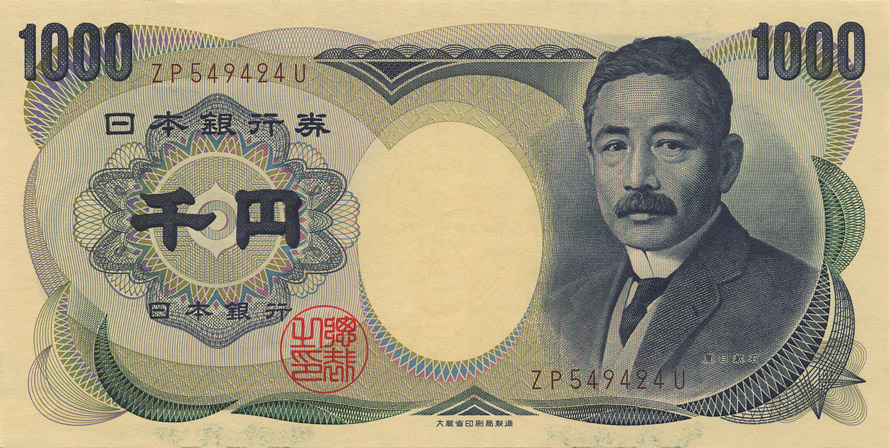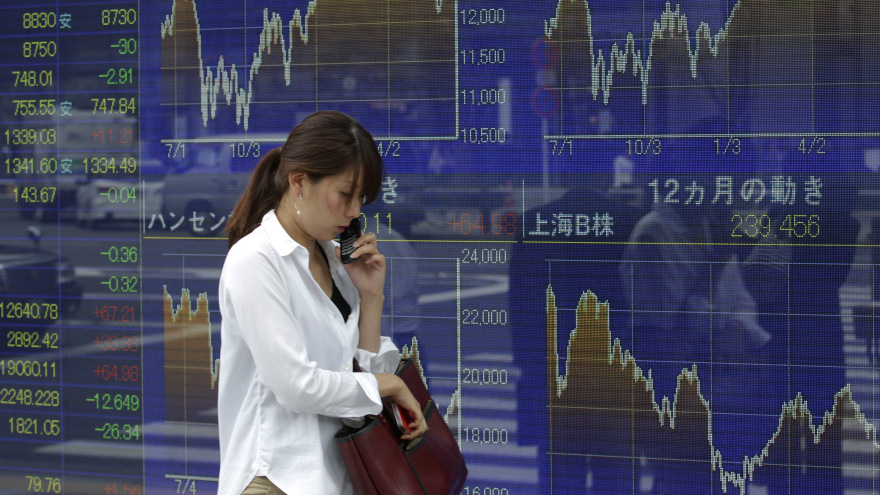The Japanese yen recently touched a six year low against the dollar. One dollar is currently worth around 108-110 yen. This many experts believe will lead to the start of a new round of currency wars. As Albert Edwards of Societe Generale writes in a recent research note dated September 22, 2014 “the yen has slipped below a key 15-year support level against the dollar…The next phase of global currency wars may have begun.”
The term “currency war” was first used by Guido Mantega, the Brazilian finance minister, in 2010. It refers to a situation where multiple countries start driving down the value of their currencies against the dollar in a bid to drive up exports and inflation.
Before we try and understand Edwards’ statement in detail, it is important to go back a few years. The Bank of Japan joined the money printing party rather late in the day towards the end of 2012. Before this the balance sheet of the Japanese central bank had expanded only 30% since the start of the financial crisis. Interestingly, in January 2012, the total assets of the Japanese central bank had stood at 128 trillion yen. Since then, it has more than doubled to 275.9 trillion yen at the end of August 2014.
The Bank of Japan plans to inject $1.4 trillion into the Japanese financial system by April 2015 by buying Japanese government bonds every month. This is pretty big, given that the size of the Japanese economy is around $5 trillion. Currently, it is printing 5 trillion yen every month and pumping that into the financial system by buying bonds. That explains why the total assets held by the bank have more than doubled.
The Bank of Japan entered the money printing party only after Shinzo Abe was elected as the prime minister on December 26, 2012. Abe promised to end Japan’s more than two decades old recession through some old fashioned economics, which has since been termed as Abenomics.
Abenomics is nothing but money printing in the hope of driving down the value of the yen against the dollar in the hope of increasing exports and also creating some inflation.
As James Rickards writes in The Death of Money “Japan…had another reason to support the money printing…Money printing was being done not only to promote exports but to increase import prices. These more expensive imports would cause inflation to offset deflation…In Japan’s case, inflation would primarily come through higher prices of energy exports.”
The Bank of Japan decided to get in bed with the government on this and is targeting an inflation of 2 percent. It wants to reach the goal at the earliest possible date. And how does that help? In December 2012, Japan had an inflation rate of –0.1 percent. For 2012, on the whole, inflation was at 0 percent, which meant that prices did not rise at all. In fact, for each of the years in the period 2009-2011, prices had fallen in Japan.
When prices are flat, or are falling, or are expected to fall, consumers generally tend to postpone consumption (i.e., buying goods and services) in the hope that they will get a better deal in the future. This impacts businesses, as their earnings either remain flat or fall. This slows down economic growth.
On the other hand, if people see prices going up or expect prices to go up, they generally tend to start purchasing things. So a moderate inflation helps businesses as well as the overall economy. Hence, by trying to create some inflation the idea is to get consumption going again in Japan and help it come out of a more than two decades old recession.
The money printing has helped create some inflation in Japan. In July 2014, the consumer price inflation in Japan stood at 1.3%. One reason for this rise has been the fall in the value of yen against the dollar. In early November 2012, one dollar was worth 79.4 yen. Currently, one dollar is worth 108-110 yen, as mentioned earlier. This has made imports expensive and pushed up inflation. As John Lanchester writes in his new book How To Speak Money “The yen has dropped, which is a good thing for Japanese industry, and inflation is showing signs of returning, which is also a good thing, though some commentators are worried that the process could quickly go out of hand.”
The question here is how can the process quickly go out of hand? Allow me to explain. The inflation hasn’t led to people spending more money. In fact, the gross domestic product (GDP) of Japan contracted at an annualized rate of 6.8% during the three month period of April to June 2014. It was also expected that a falling yen will boost Japanese exports. But that doesn’t seem to have happened either. Exports have fallen in three out of the last four months. In August 2014, exports fell by 1.3%, in comparison to the same period last year.
Interestingly, one of the key learnings in the aftermath of the financial crisis has been that if a policy does not work for a central bank, it is likely to try more of it. Given this, it is expected that the Bank of Japan will print more money in the hope of inflation reaching the targeted 2% and to get exports going as well. Diana Choyleva, head of macroeconomic research at Lombard Street Research, writes in a research note that the Bank of Japan “is also likely to redouble its QE [quantitative easing] efforts if it is to achieve its 2 percent inflation target.”
This will lead to further depreciation of the yen against the value. As Edwards of Societe Generale puts it “One of the few things I have learnt over 30 years in this industry is that when traders decide the yen/US$ starts to move it can jump by Y10 or Y20 very, very quickly indeed.”
In this scenario other countries are also likely to print money so that their currencies lose value against the dollar, in order to keep their exports competitive. The thing to remember here is that money printing in the hope of driving down the value of currency is not something that only Japan can indulge in. Interestingly, this is precisely what had happened when Japan first made its first moves towards printing money in December 2012.
In fact, politicians in South Korea by early February 2013 had started voicing their concerns about the depreciating yen. South Korea and Japan compete in several export-oriented industries, like automobiles and electronics. Korean export companies like Samsung and Hyundai compete with Japanese companies like Sony and Toyota.
At the end of December 2012, one dollar was worth 1,038.1 Korean won. Soon, the Korean won also started depreciating against the dollar, and by late June 2013, one dollar was worth around 1,160 Korean won. The Thai baht started depreciating against the dollar in April 2014. The Malaysian ringitt joined the club from May 2013 onward. By early 2014, China had also entered the currency war by allowing the yuan to depreciate against the dollar.
Nevertheless, the depreciation of this currencies against the dollar did not continue. The South Korean won is back to where it started and currently quotes at around 1063 won to a dollar. But there is nothing that can stop these countries from starting to cheapen their currencies against the dollar, all over again. The currency wars might break out all over again.
The joker in the pack is China. Currently, one dollar is worth around 6.14 Chinese yuan. It is interesting to look at the trajectory of the Chinese yuan over a period of time. In 2005, one dollar was worth around 8.27 yuan. By 2011, one dollar was worth around 6.82 yuan. The appreciation of the yuan against the dollar continued at a measured pace and by mid-January 2014, one dollar was worth 6.14 yuan. This is when things turned around and the yuan started to depreciate against the dollar, something that had not happened in a very long time. By April 30, 2014, one dollar was worth 6.25 yuan.
Among other things the depreciation of the yuan was also a response to Abenomics which had led to the depreciation of the yen against the dollar. One dollar was worth around 80 yen in November 2012, before Shinzo Abe had taken over as the Prime Minister of Japan. By January 2014, one dollar was worth 105 yen, thus making Japanese exports more competitive in the international market. China’s yuan had to be adjusted to this new reality. As China is trying to move up the value chain, its products are competing more and more with Japanese products in the international market.
Nevertheless, since June 2014, the yuan has been appreciating against the dollar. But if the Japanese keep printing money and driving down the value yen against the dollar, the Chinese are also likely to have to start pushing the yuan down against the dollar.
This would mean Chinese exports more competitive. As the yuan depreciates against the dollar it would allow Chinese exporters to cut prices of their products. Let’s understand this through an example. A Chinese exporters sells a product at $100. He ends up getting paid 614 yuan for it, at the current rate. But if one dollar is worth seven yuan, he would be paid 700 yuan. This situation will allow the Chinese exporter to cut the price of his product. Let’s say he cuts it to $90, even then he ends up earning 630 yuan ($90 x 7), which is more than earlier.
As Choyleva of Lombard Street Research, writes in a recent research note “If both Japan and the euro area go for extensive QE, emerging markets in Asia would suffer as their currencies appreciate. There would be no way China could restart its sputtering growth engine without major yuan devaluation.”
In order, to stay in competition, prices of products from other countries will have to be cut. And this will end up exporting deflation (a situation where prices are falling) to large parts of the world. Of course, it is worth remembering here that everybody cannot have the cheapest currency. Once countries start devaluing their currencies, it becomes a race to the bottom and is not good for anyone. In technical terms this is referred to as beggar thy neighbour policy.
As a senior official of the Federal Reserve once remarked: “Devaluing a currency is like peeing in bed. It feels good at first, but pretty soon it becomes a real mess.”
The article originally appeared on www.FirstBiz.com on Oct 2, 2014
(Vivek Kaul is the author of the Easy Money trilogy. He tweets @kaul_vivek)


